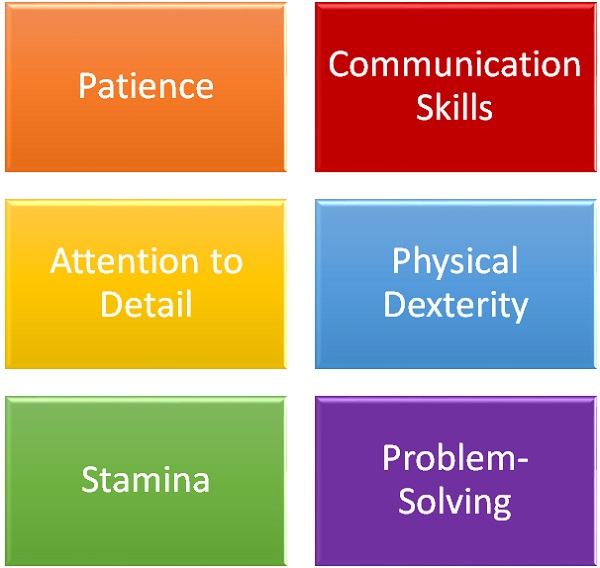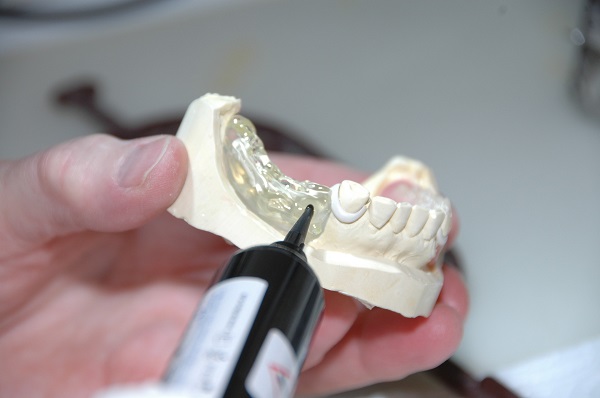To work in the field of orthotics and prosthesis, one of the highest paying master’s degrees, you’ll need so much more than an advanced degree. You must also have the right blend of personality traits and professional aptitudes to perform the clinical and laboratory work of equipping patients with the medical devices they need. These qualities include patience, communication skills and attention to detail, along with physical dexterity and stamina. Some of the personality traits expected of orthotists and prosthetists, like an aptitude for problem-solving, are valuable in both clinical and laboratory capacities.
The Qualities You Need for Clinical Work With Patients
The patients who are referred to orthotists and prosthetists have been through a lot. They may have suffered a serious injury or sustained some medical complication that resulted in a loss of function or the need for amputation. Other patients may have been born with physical damage or a missing limb that affects their function. In any case, they require custom-fitted medical devices – in the form of support braces or artificial limbs – that will help them improve function and mobility.
When you work with these patients, you need to have a good bedside manner. Patience is one of the most important qualities of an orthotist or prosthetist, according to the United States Bureau of Labor Statistics (BLS). Communication skills are another crucial requirement. Part of the job of an orthotist or prosthetist is interviewing the patient to understand what they need out of their medical device.
Another job duty that requires communication skills is teaching patients how to use their orthopedic brace or artificial limb and how to properly take care of the medical device to keep it safe. In fact, O*NET classifies the orthotist and prosthetist occupation as a heavily social occupation due to the importance of teaching and communicating with others. Notably, good orthotists and prosthetists require many of the same personality traits, like a caring and nurturing personality, that are found in good nurses.
It’s also important for orthotists and prosthetists to be detail-oriented. You need to understand exactly what a patient needs and take precise, accurate measurements that allow you to create a medical device that fits perfectly.
The Characteristics of a Skilled Medical Device Maker
IMAGE SOURCE: Pixabay, public domain
The work of consulting with patients in clinical practice is only part of the work an orthotist or prosthetist performs. Another important part of the job is creating the medical devices themselves – or, in some cases, supervising the technicians who do so. Effectively creating orthopedic braces and artificial limbs requires a great deal of physical dexterity, specifically in terms of the skills needed to perform work with your hands.
The mechanical components that make up an orthotic or prosthetic medical device are complex and intricate. Fabricating these parts and constructing the device in its entirety requires you to excel in working with your hands. Due to the physical demands of fabricating custom medical devices in the laboratory, you also need the stamina to spend long stretches of your work time using hand tools and handling shop equipment.
Your physical stamina and dexterity also help you with taking precise measurements in clinical practice, according to the BLS.
Problem-Solving in Orthotics and Prosthesis
Throughout the process of fitting patients with custom medical devices, challenges are bound to arise. Whether in an exam room or in the fabrication laboratory, you need the wherewithal to rise to these challenges and overcome them. Many of the problems you may need to solve as an orthotist or prosthetist revolve around designing a medical device that meets your patient’s unique needs.
Because each patient’s rehabilitation journey is different, members of the rehabilitation team, including orthotists and prosthetists, often need to think outside the box as they strategize new ways to help patients see the maximum possible improvement. Although you’re not the one directly responsible for coming up with exercises to improve a patient’s physical and fine motor functioning, you may still need to come up with designs for braces and artificial limbs that support the patient’s full rehabilitation program.
Orthotists and prosthetists work with physical and occupational therapists, as well as doctors, nurse practitioners and physician assistants, as part of a patient’s care team, the BLS reported.
Additional Resources


